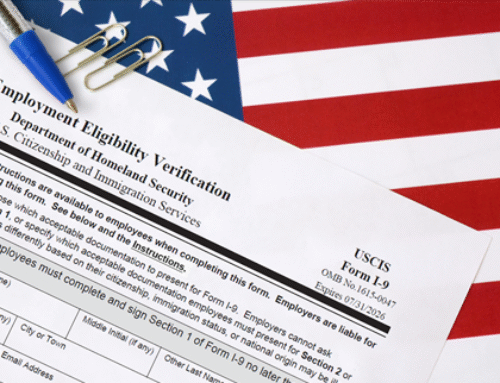Mastering Year-End Payroll Processing: A Comprehensive Guide for Businesses
As December rolls around, businesses enter the crucial phase of year-end payroll processing. This period demands meticulous attention to detail, adherence to compliance regulations, and strategic planning to ensure a seamless transition into the new year. In this comprehensive guide, we will delve into five key aspects of year-end payroll processing, providing valuable insights and practical tips to help businesses navigate this critical phase with confidence.
- Year-End Compliance Checklist
Before the year concludes, it’s imperative for businesses to conduct a thorough compliance review. This includes ensuring adherence to tax regulations, updating employee records, and addressing any changes in employment laws. A detailed checklist can serve as a roadmap, covering crucial areas such as:
- Verification of employee data: Confirm that all employee information, including names, addresses, and Social Security numbers, is accurate and up to date.
- Tax form preparation: Initiate the preparation of W-2 and 1099 forms, ensuring they reflect the correct earnings and withholdings for each employee or contractor.
- Compliance with new regulations: Stay informed about any changes in tax laws or labor regulations that may affect payroll processing.
- Holiday Bonus Strategies
As the holiday season approaches, many businesses opt to reward their employees with bonuses. However, the distribution of holiday bonuses requires careful consideration of tax implications and strategic planning. Explore different bonus strategies, including:
- Monetary bonuses: Discuss various approaches to monetary bonuses, such as fixed amounts, percentage-based bonuses, or performance-based incentives.
- Non-monetary bonuses: Highlight the appeal of non-monetary perks, such as extra time off, gift cards, or company-sponsored events, and their impact on employee morale.
- Tax considerations: Provide insights into how different bonus structures may have varying tax implications for both employers and employees.
- Updating Employee Information
Accurate employee information is the bedrock of error-free payroll processing. As the year concludes, businesses should prioritize the review and update of employee data. This involves:
- Addressing changes in personal details: Guide businesses in updating employee addresses, contact information, and any other relevant personal details.
- Reviewing tax withholding forms: Emphasize the importance of verifying W-4 forms to ensure that tax withholdings align with employees’ current financial situations.
- Confirming benefit enrollments: Remind businesses to review and update records related to employee benefits, such as health insurance and retirement plans.
- Tax Changes and Updates
The tax landscape is dynamic, with regulations subject to change. To ensure compliance, businesses must stay abreast of any alterations to tax laws and regulations, including:
- Federal and state tax updates: Summarize any changes in federal and state tax laws that may impact payroll processing.
- Compliance with Affordable Care Ace (ACA) regulations: Provide guidance on ACA reporting requirements and any recent changes affecting businesses.
- Handling PTO and Time-Off Requests
The holiday season often sees an increase in time-off requests as employees seek to spend quality time with their families. Efficiently managing these requests involves:
- Clear communication of time-off policies: Remind businesses to communicate their time-off policies clearly and transparently to avoid misunderstandings.
- Managing PTO balances: Encourage businesses to review and update employees’ paid time-off balances accurately to prevent discrepancies.
- Planning for staffing: Offer tips on creating a staffing plan that accommodates employee time-off requests while maintaining operation efficiency.
Year-end payroll processing is a multifaceted task that demands attention to detail, compliance with regulations, and strategic planning. By following the comprehensive guide outlined above, businesses can navigate this critical phase with confidence, ensuring accurate payroll processing, happy employees, and a smooth transition into the new year.
As the new year begins, there are several payroll-related matters that businesses should attend to to ensure a smooth and compliant start. Here’s a checklist of key considerations:
- Updated Payroll Tax Withholding:
- Verify and update federal and state income tax withholding tables to reflect any changes in tax laws.
- Communicate any updates to employees and encourage them to review and update their W-4 forms if necessary.
- Review and Update Employee Information:
- Confirm that all employee records are up to date, including personal information, addresses, and contact details.
- Ensure that any changes in employee status, such as promotions, terminations, or changes in employment status, are accurately reflected in payroll records.
- Annual Payroll Reporting:
- Generate and distribute W-2 forms to employees by the IRS deadline (usually January 31st).
- Complete and file Form W-3, which summarizes the information on all W-2 forms, with the Social Security Administration (SSA).
- Benefit Plan Updates:
- Review and update employee benefit plans, including health insurance, retirement plans, and other voluntary benefits.
- Communicate any changes in benefits offerings or coverage to employees.
- Adjust Payroll Systems:
- Update payroll software and systems to account for any changes in tax rates, wage limits, or other regulatory requirements.
- Verify that the payroll system accurately calculates deductions, benefits, and any new or updated earning codes.
- Compliance Review:
- Conduct a compliance review to ensure that payroll processes align with current labor laws, tax regulations, and other relevant legislation.
- Stay informed about any changes in federal, state, and local regulations that may impact payroll.
- Vacation and Time-Off Policies:
- Confirm that vacation and time-off policies are communicated clearly to employees.
- Update and communicate any changes to time-off accruals or policies for the new year.
- Performance Reviews and Salary Adjustments:
- Coordinate with HR to ensure that any salary adjustments based on performance reviews are accurately reflected in the payroll system.
- Communicates salary changes to employees in a timely manner.
- Electronic Filing and Payment Deadlines:
- Familiarize yourself with electronic filing and payment deadlines for federal and state payroll taxes.
- Ensure that all necessary documents and payments are submitted accurately and on time.
- Training for Payroll Staff:
- Provide training to payroll staff on any new procedures, software updates, or changes in regulations.
- Ensure that payroll staff are aware of their responsibilities for the new year.
- Budget Planning:
- Collaborate with finance teams to align payroll budgets with overall company financial goals.
- Plan for any changes in labor costs or staffing levels that may impact the budget.
By addressing these considerations, businesses can start the new year on solid footing, ensuring compliance, accuracy, and efficiency in their payroll processes. Regular communication with employees and staying informed about legislative changes are essential components of effective payroll management.
Official Website: https://avidpayroll.com/
Official LinkedIn: https://www.linkedin.com/company/avid-payroll





